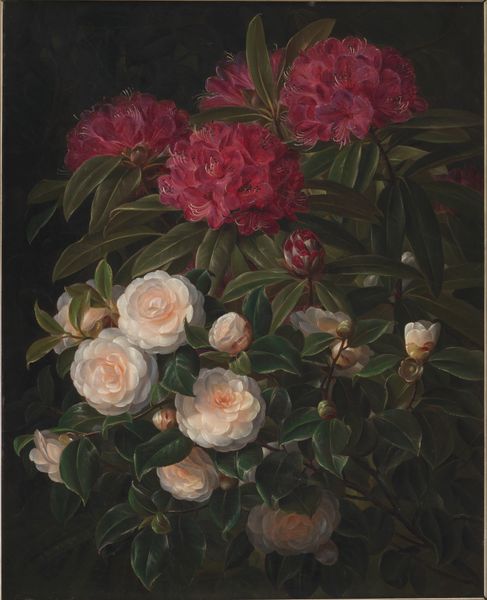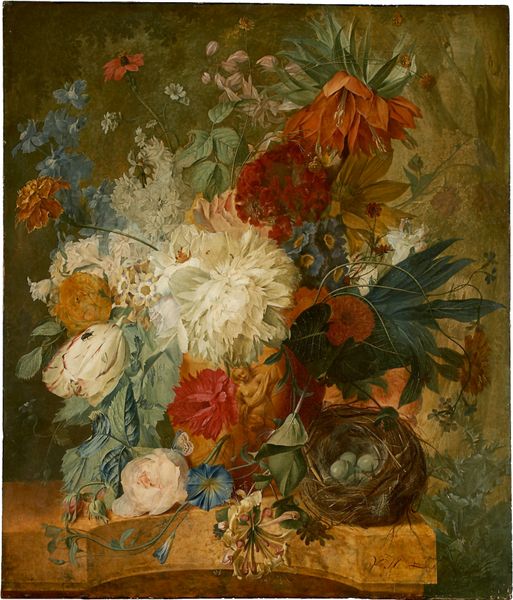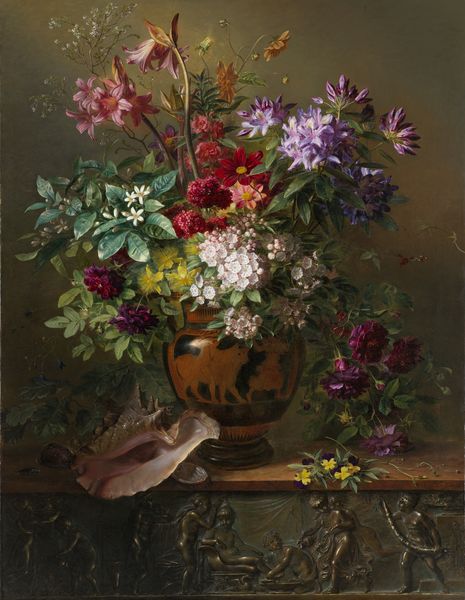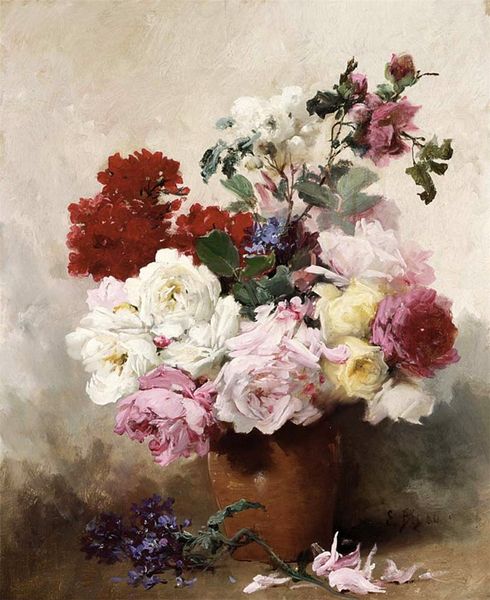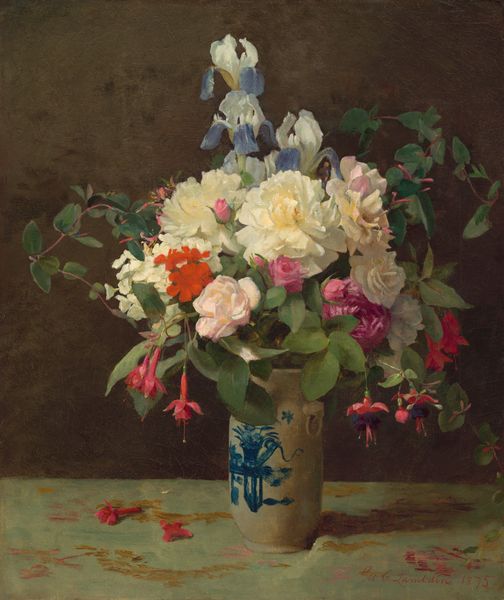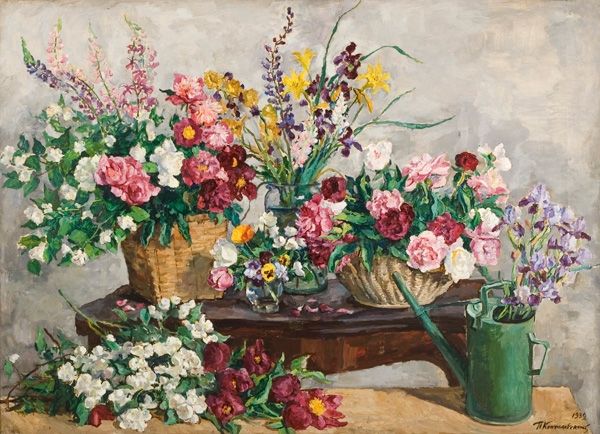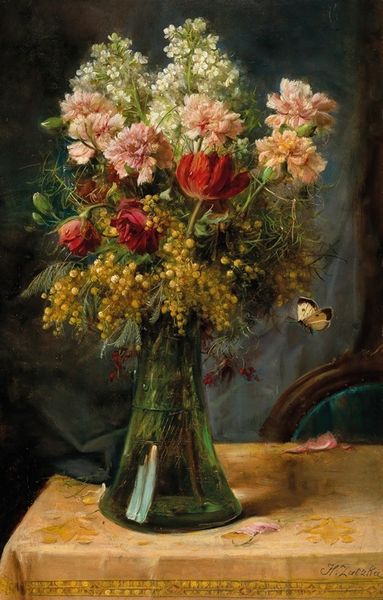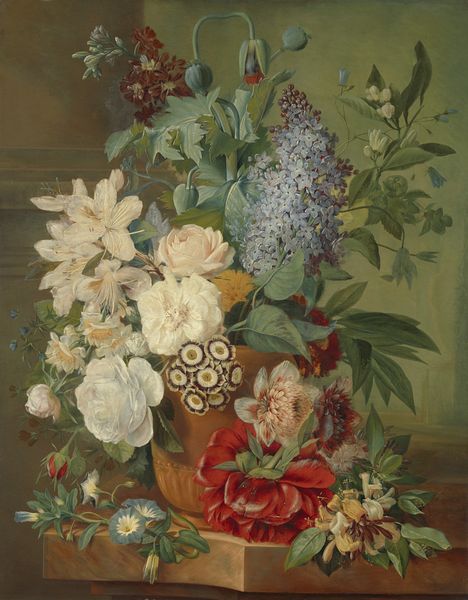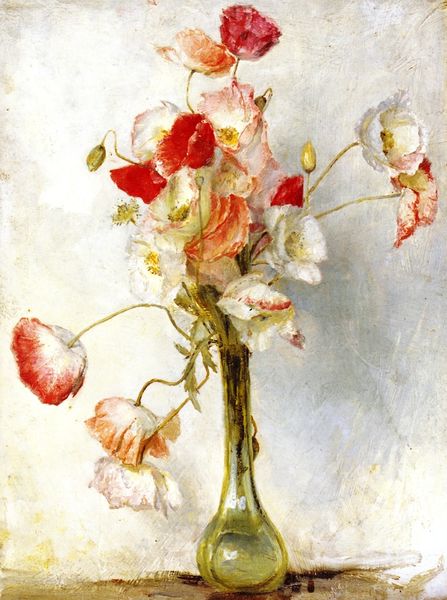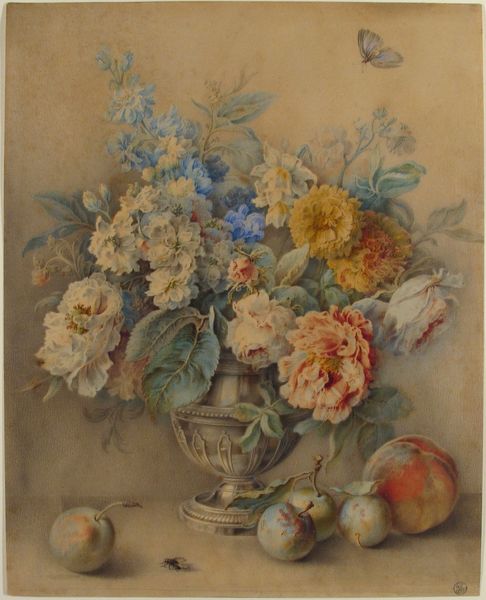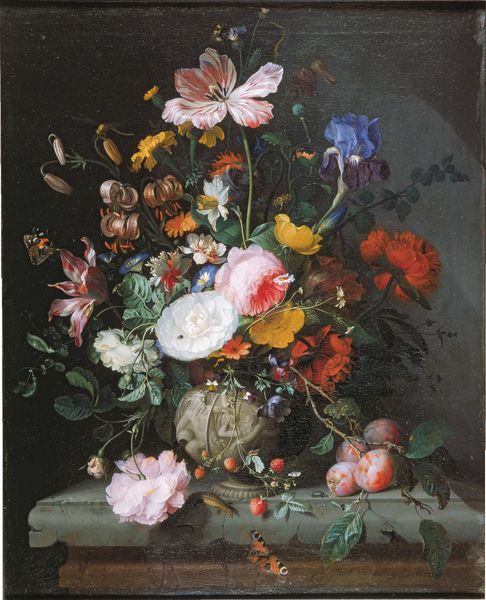
painting, oil-paint
#
painting
#
oil-paint
#
flower
#
intimism
#
academic-art
#
watercolor
#
realism
Dimensions: 40 x 32 in. (101.6 x 78.7 cm)
Copyright: Public Domain
Curator: "Side of a Greenhouse," an oil painting likely crafted between 1867 and 1880 by George Cochran Lambdin. It currently resides here at the Metropolitan Museum of Art. Editor: My initial reaction is to the palpable stillness. It's more than just flowers; it's an orchestrated calm, the plants meticulously arranged, their surfaces meticulously captured. You almost feel like you could touch the glazed clay of those pots. Curator: Indeed, the academic art tradition is clearly visible here. Lambdin focuses on realism and the intimate details of domestic life. There’s an undeniable sentimentality at play, reflecting the Victorian era's idealization of the home and its contents. Editor: Those humble clay pots are really grounding, aren't they? Consider the act of potting. The social context of cultivating this controlled little ecosystem is fascinating when contrasted with industrial output and availability. Did he, or the painting's probable first owner, source or make the containers themselves? That's part of the piece's story as much as the blooms are. Curator: A vital consideration! And one could examine the cultural value then placed on such leisure activities. For affluent families, greenhouse plants signified prosperity, access to rarities. Flowers also featured prominently in Victorian symbolism and were part of how complex, coded social signals were communicated within the household. Editor: The composition reinforces the sentimentality, with its tightly-packed, slightly asymmetrical nature drawing the viewer's eyes from one blossom to another. Look at the handling of light: each petal and leaf reflecting light with remarkable skill, almost photographic, except this took hours of skilled labor to achieve by hand with pigment, skill, and time. What an accomplishment, even though its scale might feel quite modest. Curator: The modest scale contributes, ironically perhaps, to the feeling of intimacy, the personal moment. It is this cultivation of personal meaning in a changing era where social anxieties ran high. Editor: Very well put. Overall, a lovely piece of craftsmanship offering us a glimpse into a material and a society so entwined they are one and the same. Curator: Absolutely; the way objects gain importance via the forces that give rise to and shape taste – an invaluable window onto 19th-century ideals.
Comments
No comments
Be the first to comment and join the conversation on the ultimate creative platform.
